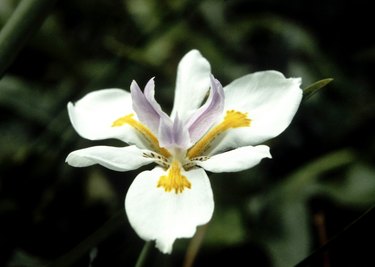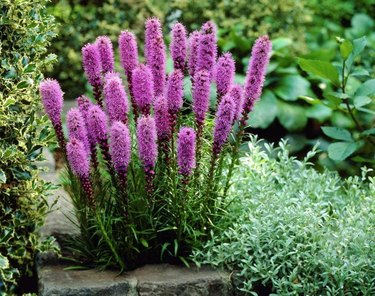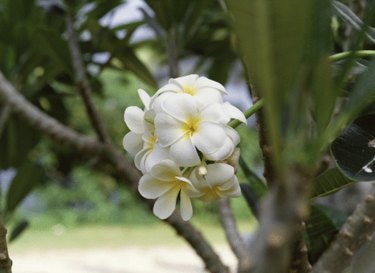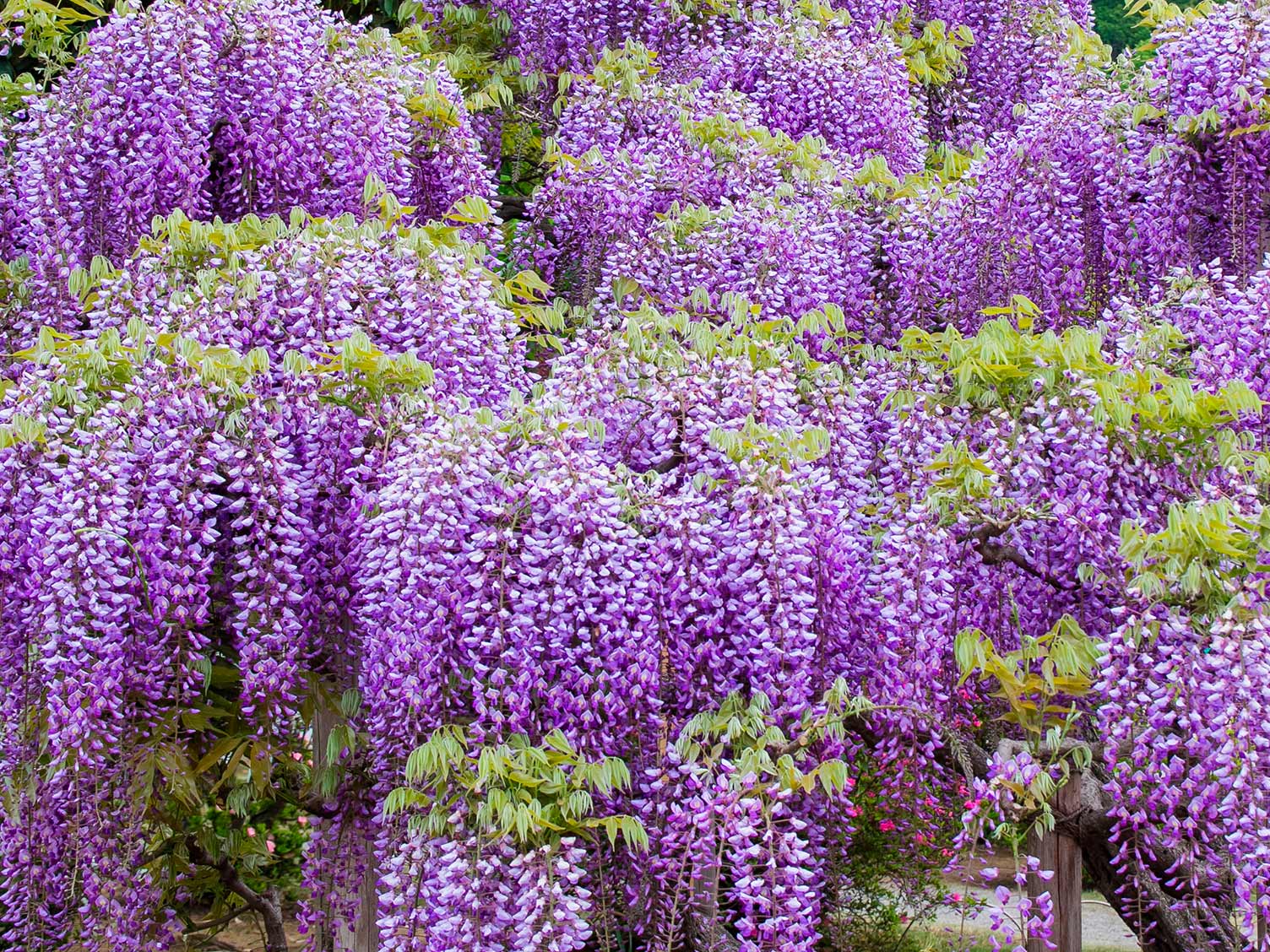Based on the species, the wisteria vine drapes its fragrant, lilac-colored flowers over trees and buildings in the middle to late spring. When they bloom, they only show up once a year, every three weeks to two months. However, special wisteria cultivars are known to bloom two to three times in a season.
Once your wisteria has been established, it will likely only bloom once a year. However, some cultivars of Kentucky and American wisteria offer two to three blooming periods in a growing season.
Wisteria is one of the most stunning flowering vines you can grow. When it erupts into bloom in springtime, cascading flowers in shades of purple, pink, blue, or white create a spectacular floral display. However, many gardeners get frustrated when their wisteria refuses to bloom or only blooms sparsely. Understanding wisteria’s blooming habits is key to getting the most out of this vine.
When to Expect Wisteria Blooms
Wisteria is a woody, deciduous vine that only blooms on new growth. This means it forms flower buds during the previous growing season for the next year’s bloom. So you need to have a basic understanding of when wisteria blooms naturally based on the species:
- Japanese wisteria (Wisteria floribunda) blooms in spring before the leaves emerge, usually in April.
- Chinese wisteria (Wisteria sinensis) also blooms in spring before leaves form, typically April to May.
- American wisteria (Wisteria frutescens) blooms later in early to mid summer, usually June to August.
- Kentucky wisteria (Wisteria macrostachya) hits peak bloom in early to mid summer as well, around June to July.
Within these general time frames bloom time can vary by cultivar and your specific climate. For example, the cultivar ‘Amethyst Falls’ may start blooming as much as a month earlier than the straight species. Tracking your individual plant’s habits will give you the most accurate sense of when to expect flowers.
Bloom Frequency
-
Most wisteria varieties bloom just once a year on growth from the previous season. However, some cultivars of American and Kentucky wisteria are repeat bloomers, with a second flush of flowers in summer on new growth.
-
The cultivars ‘Blue Moon’ and ‘Aunt Dee’ can bloom up to three times in a single growing season if pruned correctly.
-
Young wisteria vines typically take 2-3 years after planting before they begin blooming. However, starting wisteria from seed can take up to 15 years for the first blooms!
Why Wisteria Won’t Bloom
There are a few key reasons why an established wisteria vine may not bloom:
Insufficient Sunlight
- Wisteria needs full sun to promote flowering, at least 6 hours of direct sun per day. Too much shade will reduce blooms.
Immature Vine
- Patience is required with young vines. Don’t expect blooms until 2-3 years after planting.
Excess Fertilizer
- High nitrogen fertilizers stimulate leafy growth but inhibit flowering. Go easy on fertilizer to encourage more blooms.
Incorrect Pruning
- Wisteria needs pruning to stimulate flower buds. Improper pruning usually means too little pruning, but excessive pruning can also limit blooms.
Water Stress
- Drought conditions will cause wisteria to drop flower buds. Make sure vines get weekly deep watering for best bloom.
Age
- Very old, dense vines may bloom less even with good care. Thinning congested growth can help revive an aging plant.
How to Get Wisteria to Bloom More
Follow these tips to coax more flowers out of your wisteria:
Site in Full Sun
Wisteria thrives on sunshine. Aim for at least 6 hours of direct sun, the more the better. Morning sun is ideal.
Use a Support Structure
Give wisteria a strong trellis, pergola, or arbor to climb. This allows better air circulation and light penetration for improved blooming.
Water Weekly
Give wisteria a thorough, deep watering once per week in summer. More mature vines may need more frequent watering.
Plant in Well-Draining Soil
Wisteria prefers evenly moist but well-drained soil. Wet feet will cause root rot and poor flowering.
Avoid High Nitrogen Fertilizer
Go easy on fertilizer, which stimulates leafy growth at the expense of flowers. Opt for low nitrogen, high potassium formulas.
Prune Properly
Prune twice a year to maximize blooms – in summer to control rampant growth and again in winter to stimulate flower buds.
Allow Time to Mature
Have realistic expectations and be patient with young vines. Prune to shape the first 3 years while waiting for blooms.
Consider Repeat Blooming Cultivars
Select varieties known to bloom more than once like ‘Blue Moon’, ‘Aunt Dee’, or ‘Amethyst Falls’ for the longest flower display.
When and How to Prune Wisteria for More Flowers
Proper pruning is vital for keeping wisteria vines under control and encouraging prolific blooms. Follow this pruning schedule:
Summer Pruning
In early summer, after spring bloom finishes, prune back new shoots to 6 leaves or 6-12 inches long. This controls rampant growth while allowing some extension. Repeat throughout summer as needed to keep growth under control.
Winter Pruning
In late winter, prune summer shoots back to just two or three buds. Also thin congested vines by removing at least a third of the oldest, thickest stems at ground level. This stimulates new growth and flower buds.
First 3 Years
Prune only to shape the vine and direct growth the first three seasons. Allow vines time to mature before heavier pruning to maximize flowering.
Growing Tips for Success with Wisteria
Follow some basic growing guidelines to help your wisteria thrive:
- Plant in spring after the last frost once the ground warms up.
- Space vines at least 10-15 feet apart to prevent crowding and competition.
- Water newly planted vines regularly until established, then weekly during summer.
- Add trellises, pergolas, or other sturdy structures for wisteria to climb.
- Insert vine support posts at least 2 feet deep into the ground for stability.
- Fertilize lightly in spring with a low nitrogen, high phosphorus formula.
- Thin congested vines every few years to open up light and air flow.
- Prune frequently to control rampant growth and stimulate blooming.
- North and east facing walls provide ideal cool, sunny sites for wisteria.
- Consider planting wisteria in containers on patios and decks to control spread.
Gorgeous But Can Be Aggressive
One word of caution about wisteria – it can be a bit aggressive in the right growing conditions. Follow these tips to prevent problems:
- Carefully site vines at least 15-20 feet from structures, trees, and power lines.
- Monitor growth and prune frequently to keep rampant vines under control.
- Consider planting grafted, non-invasive wisteria cultivars like ‘Amethyst Falls’.
- Grow wisteria on a sturdy trellis or arbor so it doesn’t strangle trees and damage structures.
- Plant in containers or in spaces bounded by pavement to restrict spread of roots and runners.
Wisteria certainly earns its reputation as a high maintenance vine. But the glorious springtime cascade of flowers makes the effort worthwhile! Follow the tips in this guide to encourage your wisteria to Bloom as long and as profusely as possible.
Why Won’t My Wisteria Bloom?
Growing wisteria from seed could take you 15 years to see a bloom. If you have a cutting, dont expect your wisteria to bloom the season after youve planted it. Wisteria takes its sweet time to reward gardeners with blooms, typically two to three years after planting.



But if your plant is already established and won’t bloom, make sure the wisteria is in the best conditions for it to live. This includes spacing wisteria plants at least 10 feet apart and in a location that receives full sun. Wisteria prefers well-draining soil and weekly watering. American wisteria does well in zones 5 to 9, while Kentucky wisteria thrives in Zones 4 to 9.
When Does Wisteria Bloom?
If you live in a place where wisteria trees have bloomed with purple flowers, you know that spring has arrived. Which month you can be sure to see wisteria blooms depends on the type of wisteria.



Video of the Day
American wisteria (Wisteria frutescens) blooms as early as the beginning of June and on through August. If you happen to have the Amethyst Falls cultivar, then you may be blessed with a second blooming.
In early summer, around the end of June, Kentucky wisteria (Wisteria macrostachya) starts to show its purple clusters. The Blue Moon cultivar will bloom up to three times.
Starting in April, the Japanese wisteria (Wisteria floribunda) and the Chinese wisteria (Wisteria sinensis) bloom before their American cousins. These species grow their flower buds before the foliage.
How long does it take for a wisteria to bloom?
How long does a wisteria take to bloom?
And, if you planted it from a seed, it could take 15-25 years to bloom, if it blooms at all. Once your Wisteria matures, it will usually bloom in mid-to-late spring, depending on where you live and which variety you have. It could be early May to early June, or earlier if you live in a warmer area.
Are wisteria vines blooming?
Stare out onto your garden landscape to see beautiful blue, lilac, and pink blooms draping from wisteria vines. Wisteria is a high-climbing variety of vine that blooms spectacularly in the spring and early summer.
Why is my wisteria not blooming this year?
There are many reasons Wisteria’s blooms might not be as spectacular this year, even though it’s bloomed year after year in the past. If there is excessive nitrogen in the soil, it can encourage the growth and development of leaves, but it can also slow flowering.
How long do wisteria flowers last?
Wisteria flowers typically last for many weeks, contingent on the kind. For instance, Japanese Flowers typically last longer because they open earlier and bloom for longer than other varieties.
- The Ultimate Guide to Growing Strawberries in Raised Beds - August 8, 2025
- No-Dig Garden Beds: The Easiest Way to Grow a Beautiful Garden - August 6, 2025
- How to Protect and Preserve Wood for Raised Garden Beds - August 6, 2025

